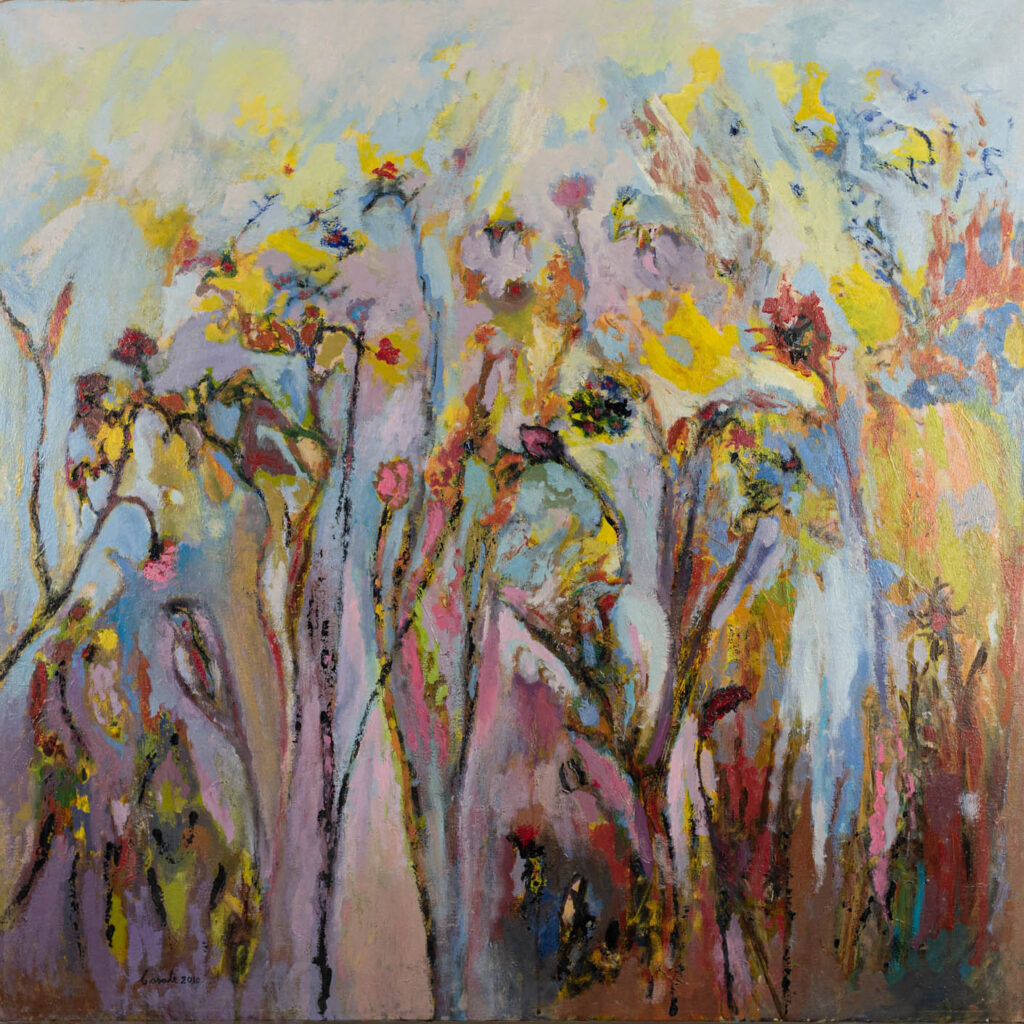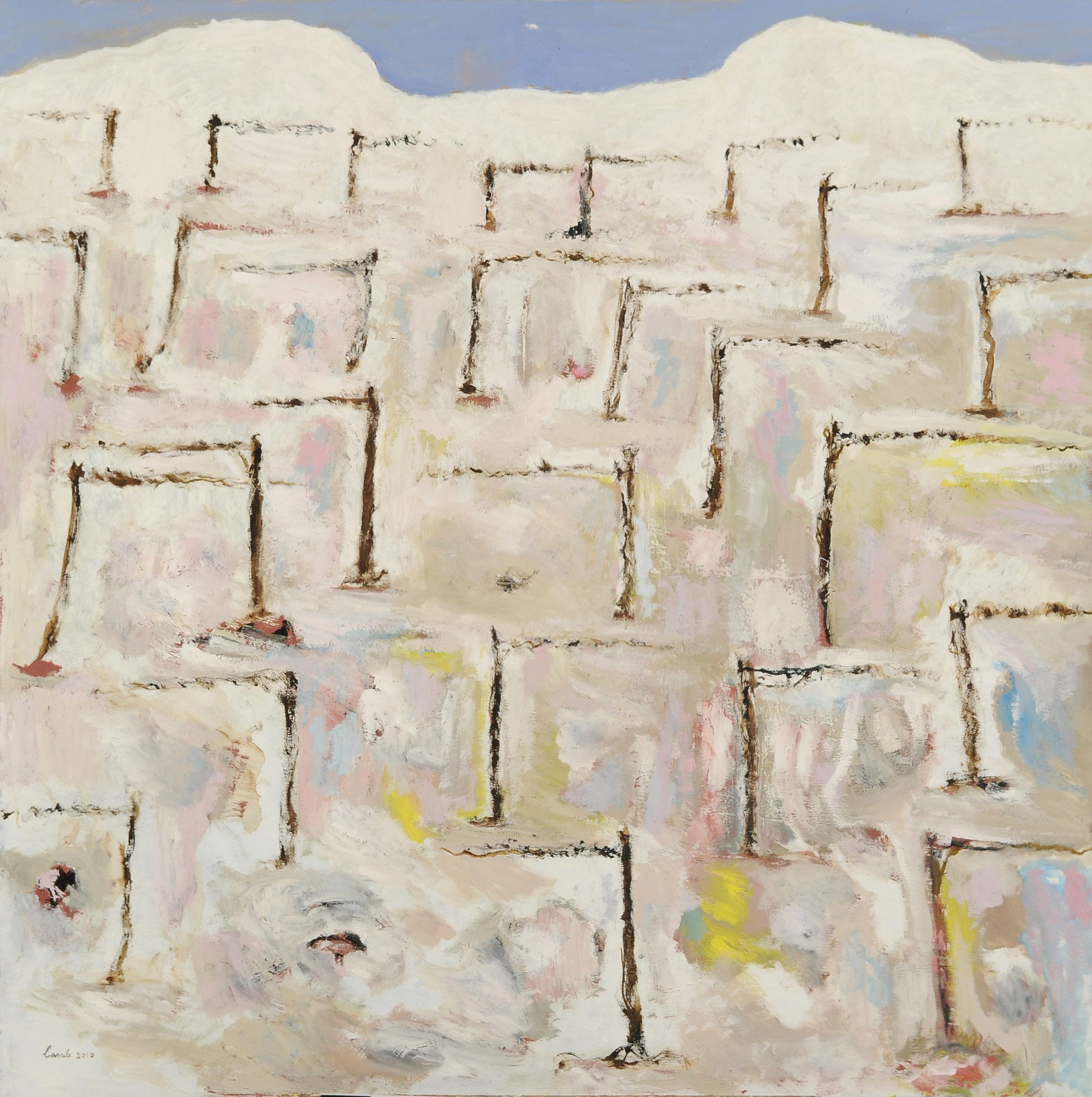
No man ever dedicates himself to art without harboring more or less valid motivations. Sometimes, he is driven by the simple love of divertissement; at other times, by the need to confront his own memories; still, by the desire to give concrete expressive space to his reflections; and finally, by the urgency to insert himself—with personal inquiries and messages—into the great mystery of the structures and relationships among beings and things, adding his voice to the chorus of lamentations, questions, or rationalizations concerning the destinies of man and the world.
It is crucial to break away from the common, everyday language and to opt for the “high” language of images, also to offer different resonances to our unceasing inner dialogue with ourselves and with others. One cannot fail to notice this constant existential tussle with the things that surround us, with the limits imposed upon us and by nature, with our soul-wrenching temporal and ideal obstacles. The “negative” lurks every day; each moment is both a loss and a gain with respect to how we situate ourselves in time and whether we manage to construct our hopeful responses. To proclaim aloud our consent and dissent—with an image, a color, a form, a sound—is an active experience of participation in existence, a cry, a prayer, or even an imprecation directed toward a state of affairs in which, willingly or not, we have found ourselves on this earth.
Something of all this must have happened to Alessandro Casale. The legalistic approach—by its very nature—responds with a cold, rational dialectic, nailing everything to the appearance of right and wrong, demanding dissertations on the possible, and tending toward the aridity of formal truth. For Casale, it was evidently not enough to structure his day according to the rhythm of incidental roles, memories, and judgments. Perhaps the leap into an ambiguous yet dramatically creative uncertainty arose precisely from this fundamental dissatisfaction, from the conscious realization that the aims of life, those unprecedented and vitalistic endeavors, the most significant destinies, were entirely different from the gears of an unfulfilling routine that was, in the end, extremely fragile and ephemeral.
So, in such cases, the individual embarks on an illogical and risky path, fraught with errors and misunderstandings, all in order to escape an obligatory and unbearable situation. Behind him lay the culture and affection of a distant, lost land. His origins were withering from a lack of familiarity with personal experiences suffused with imagination: it was necessary to reclaim an identity more in tune with his hopes, his dreams, his deepest intimacies. The first expressive results were lacking—due to technical reasons and methods of self-analysis: the initial descriptivism was merely a convenient fallback, the first static figures the product of a failed attempt at a new dialogue with fellow human beings, and the naturalistic landscapes an emotional ingenuousness.
But solitude and intelligence have, over the years, worked with gradual insistence: it became imperative to sharpen the themes and to emotionally enrich both the observation and the reinvention of the real. Even the emotions had to assert themselves urgently, as stark as the silence that dictated them and the reason that filtered them. Slowly, these sunlit and uninhabited landscapes were born (not necessarily as recollections), expansive in sky and land as adolescent memory once suggested, and suspended amid the anxieties that life, in its turn, so generously offered.
In these canvases the primary figurative nucleus is represented by clumps of underbrush, brambles, and stones—and it is precisely around these humble elements that a seemingly monochrome space arises, almost as both commentary and consolation for those forms. Space itself nourishes, embraces, and scatters them here and there like milestones of a narrative that is existential rather than geographical, born in the silence of a personal history that now demanded different epilogues and new shores. Moreover, the deliberate insistence on a specific theme—which might appear limiting and could betray an anxiety for pictorial security—has already been surpassed by the current pursuit that strives to impart stylistic coherence even to other contents, to figures, flowers, houses, involving everything in a fleeting, transfiguring, and serene chromatic flash.
The syntax, indeed, is elementary: the positioning of the sparse elements responds to the need to distribute patches on a canvas with the same meticulous care with which events are arranged in our arduous daily life—aside from the interplay of balances, tonal dosages, and rhythmic patterns that, like a musical score, create the soft and loud passages of the painting. And these patches tend to ignite and fade like signals of a sensitivity continuously grazed by the daily flow of life, a flow that motivates certain life choices, a certain taste for painting, the insistence on this or that hue.
And what of color? It is a tool to make that which is not present in nature “exist”—a felicitous, lyrical dazzle, perhaps designed to retrieve, through the mind, the hidden elegy of things and transform it into form, line, and synthesis. Melancholy, too, must carve out its own physical, visible space, settling upon these desolate plains to which the painter, in vain, offers the vivid stippling of tiny colored masses and the joy of a marine light that seems to be the ultimate shudder of a hidden earthly faith.
To me, these canvases testify to an ongoing discourse—one that preludes further developments and a greater variety of themes, yet is already imbued with authentic necessity and the proper expressive vigor. It is a matter of broadening the themes through which to transfer the urgencies of living and of self-expression, investing with the same passion—now turned from the landscape to martyrdom—so that emotion clings even more vividly to the meaning of reality. Through Casale’s work, we are witnessing a response—more fitting, albeit less practical and profitable—to the subtle despair of our everyday existence.

DINO CARLESI
